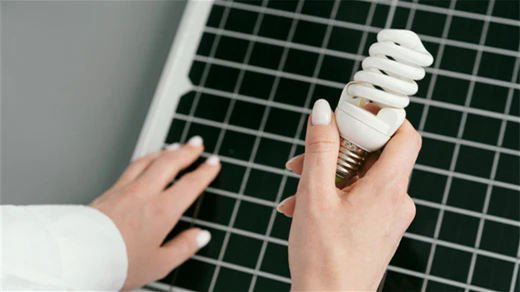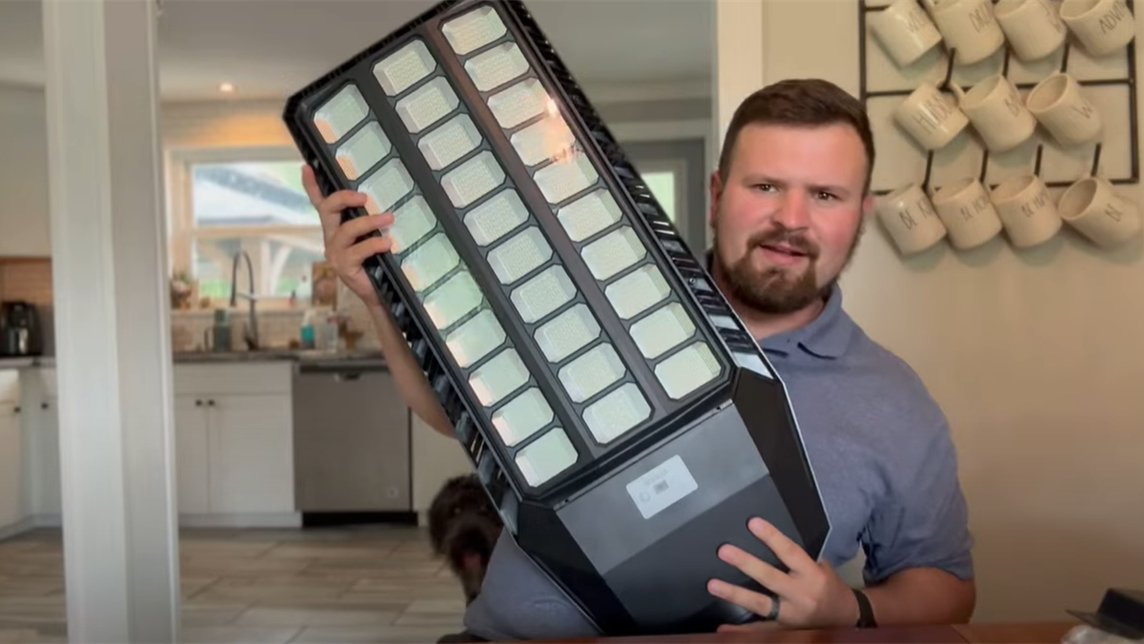Solar lights have become popular because they use sunlight to power up, which is good for the environment. They're getting better and cheaper because of new technology, like better solar panels and LED lights. Plus, they save money in the long run because they don't need electricity from the grid. Although solar lights are very popular nowadays, there are still some problems, such as charging problems, especially when there is no sunlight. So let’s take a look at how to charge solar lights.

Advantages of solar lights:
- Environmentally Friendly: Solar lights are powered by renewable energy from the sun, making them an eco-friendly lighting solution. They reduce reliance on fossil fuels and minimize carbon emissions, helping to mitigate climate change and reduce environmental impact.
- Energy Efficiency: Solar lights harness sunlight to generate electricity through photovoltaic (PV) panels, converting solar energy into usable electrical power. This renewable energy source is abundant and free, resulting in lower operating costs and reduced electricity bills compared to traditional grid-powered lighting.
- Cost Savings: While the initial cost of purchasing and installing solar lights may be higher than traditional lighting fixtures, they offer long-term cost savings due to lower electricity consumption and minimal maintenance requirements. Once installed, solar lights have virtually no ongoing operational costs, resulting in significant savings over their lifespan.
- Easy Installation: Solar lights are easy to install and require no wiring or electrical connections, making them suitable for remote locations or areas without access to grid power. They can be quickly deployed in various outdoor settings, including parks, pathways, gardens, and remote rural areas, without the need for extensive infrastructure or construction.
- Versatility: Solar lights come in a variety of designs, sizes, and configurations to suit different applications and aesthetic preferences. They can be used for various outdoor lighting purposes, including pathway lighting, landscape illumination, security lighting, and decorative accent lighting, enhancing the functionality and ambiance of outdoor spaces.

Disadvantages of solar lights:
Although solar lights have many advantages, there are still some disadvantages.
- Weather Dependence: Solar lights rely on sunlight to generate electricity, which means their performance and charging capabilities are dependent on weather conditions. Cloudy days, overcast skies, and limited sunlight can affect the charging efficiency and runtime of solar lights, potentially leading to reduced illumination during periods of inclement weather.
- Limited Run Time: Solar lights typically have limited battery capacity and may not provide continuous illumination throughout the night, especially during winter months or in locations with shorter daylight hours. Inadequate charging or insufficient sunlight exposure can result in shorter run times and reduced lighting performance, requiring additional backup lighting sources or supplementary charging methods.
- Reliability and Durability: Solar lights may be less reliable and durable compared to traditional lighting fixtures, especially in harsh outdoor environments or extreme weather conditions. Exposure to moisture, temperature fluctuations, UV radiation, and physical damage can degrade the performance and lifespan of solar lights, requiring regular maintenance and occasional replacement of components.
- Light Intensity and Coverage: Solar lights may not always provide the same level of light intensity and coverage as traditional lighting sources, particularly in areas with high lighting requirements or specific lighting standards. The design and performance of solar lights can vary depending on factors such as solar panel efficiency, battery capacity, and LED technology, which may affect their suitability for certain applications or environments.

Overall, while solar lights offer numerous advantages in terms of sustainability, energy efficiency, and versatility, they also have limitations and challenges that need to be considered when selecting and deploying them for outdoor lighting applications.
How To Charge Solar Lights Without Sunlight
Use Artificial Light Sources:
- Artificial light sources such as incandescent or fluorescent bulbs emit light that solar panels can convert into electricity, albeit at a slower rate compared to sunlight.
- Place the solar lights under bright artificial lights for several hours to allow the solar panels to absorb enough light to charge the batteries. Keep in mind that the charging process may take longer than it would with direct sunlight.
- Consider using energy-efficient LED bulbs, which produce less heat and consume less power compared to traditional incandescent bulbs, to minimize energy consumption while still providing sufficient light for charging.
Indoor Charging Stations:
- Create dedicated indoor charging stations equipped with low-power LED lamps or other light sources to charge solar lights when sunlight is not available.
- Position the solar lights near these charging stations during periods of low light or darkness, such as nighttime or cloudy days, to ensure continuous charging.
- Optimize the charging stations by placing them near windows or other sources of natural light to supplement artificial light sources and improve charging efficiency.
Use Reflective Surfaces:
- Reflective surfaces such as white walls, mirrors, or aluminum foil can help amplify ambient light and direct it onto the solar panels of the solar lights.
- Position the solar lights near reflective surfaces to bounce light onto the solar panels, especially in areas where direct sunlight is limited or unavailable.
- Experiment with different angles and positions to maximize the reflection of light onto the solar panels and optimize charging efficiency.
USB Charging:
- Some solar lights come with USB charging capabilities, allowing them to be charged using a USB cable connected to a power source such as a computer, power bank, or USB wall adapter.
- Simply connect the solar lights to the USB charging port using the provided cable and plug them into a power source to recharge the batteries. This method provides a convenient alternative to solar charging when sunlight is not available.

External Battery Chargers:
- Invest in external battery chargers specifically designed for solar lights, which can be powered using conventional electrical outlets.
- These chargers typically come with connectors compatible with solar lights, allowing you to connect the lights to the charger and recharge the batteries quickly and efficiently.
- Keep the external battery charger handy for times when sunlight is insufficient for solar charging, such as during overcast days or in shaded areas.
Conclusion
While these alternative methods can help charge solar lights when sunlight is not available, it's important to note that they may not be as efficient or effective as traditional solar charging. It's always best to prioritize placing solar lights in locations with adequate sunlight exposure to ensure optimal performance and longevity of the batteries.


































Leave a comment
This site is protected by hCaptcha and the hCaptcha Privacy Policy and Terms of Service apply.